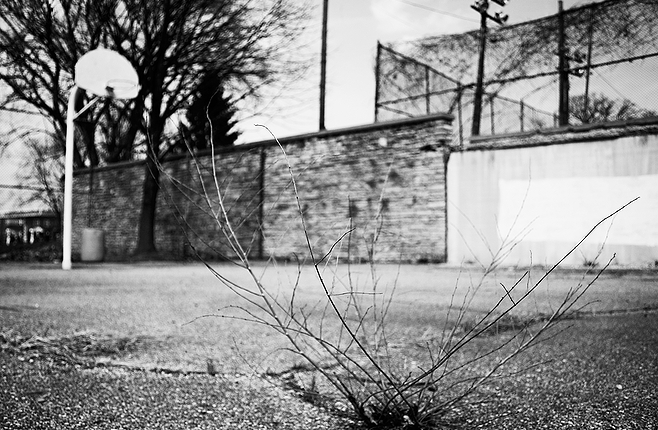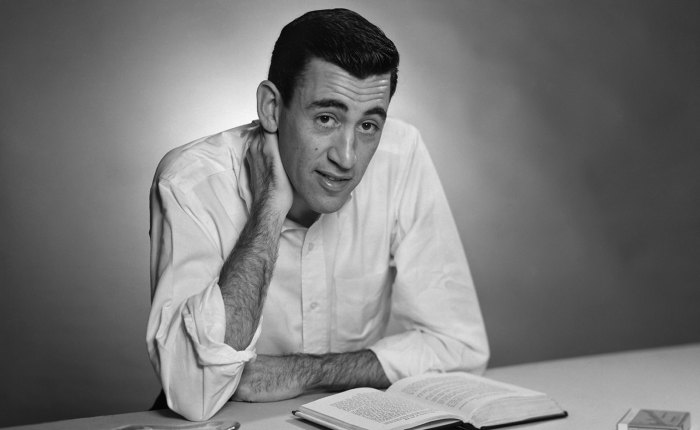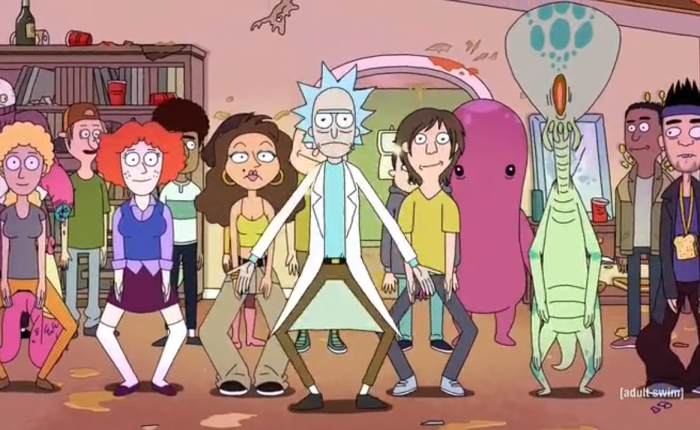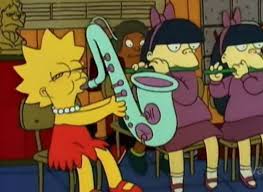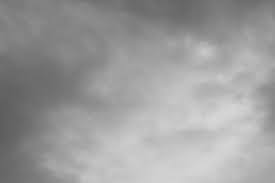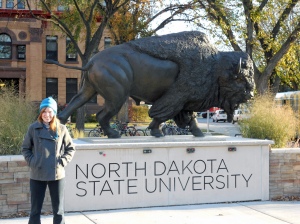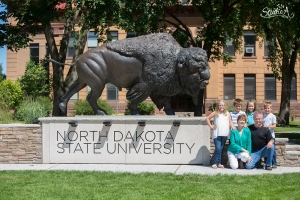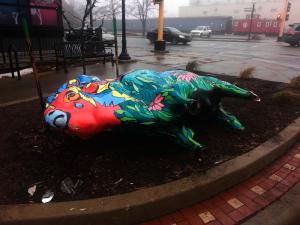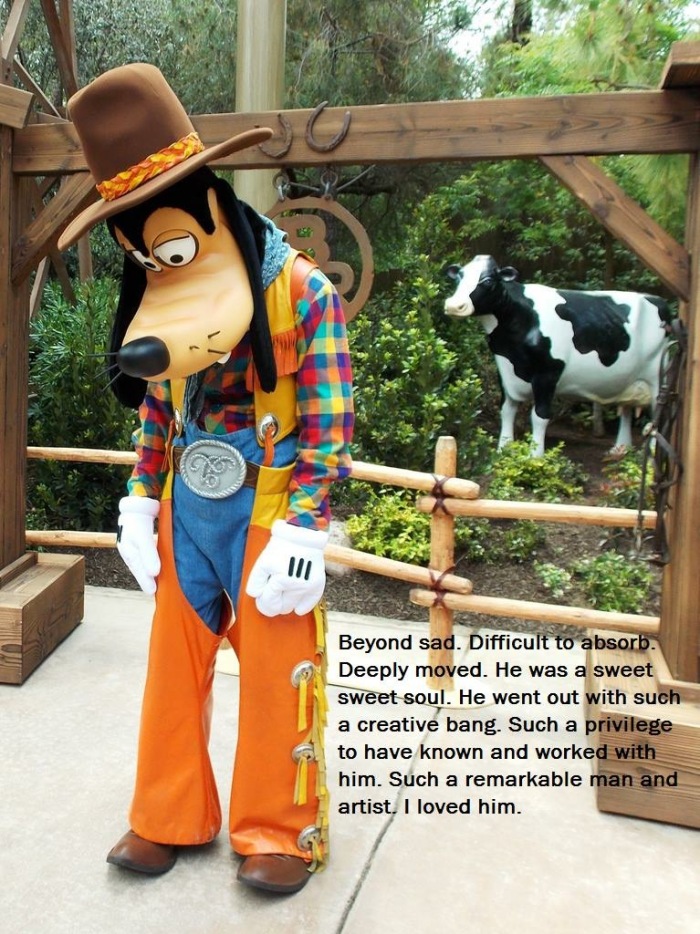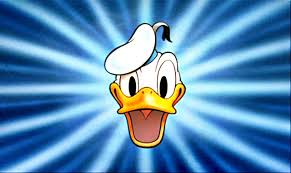I am going to attempt to explain the reasons I find the oeuvre of J.D. Salinger, specifically those works chronicling the lives and dispositions of his Glass family characters, so compelling; despite that for how vainly my blunted instruments of the craft are capable of doing justice to them, I may as well be a good medium-sized German Shepherd attempting politely to operate a Buick. Strap in.
There is a trope in a number of works of fiction, almost universally film or TV and including your particular favorite Utopia, of a work of literature so compelling and mysterious as to inspire a kind of cultlike fascination, wherein its proponents endlessly scour the work itself and what details can be gleaned of the author’s life for clues, themes and references to help them understand the hidden secret at its heart. And universally, this trope utterly fails to really convey the sense of mystery such a work would inspire. They try to throw in little details about the author mysteriously dying in an asylum, or like that such and such random little passage in chapter 4 actually reveals THE COMBINATION TO THE SAFE, but as a viewer, you never actually get caught up in the headrush of the mysticism that you see the characters going through. You just accept that they are feeling it, and move on.
The Glass family series, then, is my full-on Life of Pi, Da Vinci Code, crazy-person-assembling-a-collage-of-ostensibly-relevant-materials-connected-by-red-string-on-the-walls obsession. I have read all of the stories, the last of them 2 months ago when I had to request it through the library’s pull service, which means Diana over in storage had to go pull out the original issue of the New Yorker which is the only place it has appeared in print, and scan all 60 or so pages for my benefit and I am sorry I made Diana do it but I am not really sorry because I HAD to read it.
Unlike in the movies I am not attempting to find a hidden treasure or the truth behind a conspiracy theory or something crazy like that by reading them. Instead, I am attempting to develop, by my own criteria, a complete understanding of Salinger’s worldview as expressed, in fits and starts, in various literary forms, over the course of 17 years, by these stories. In so doing, I hope to achieve what I might in my loftiest moods call “enlightenment”, but in my (god, I hope) more typically down-to-earth vernacular describe as “a more workable view of the world and my place in it than the one I hold, gleaned from literature that hews more closely to my lived emotional and intellectual experiences than anything else I have ever read.”
There are a lot of reasons the stories have so much appeal – they’re endearing, clever and mysterious in ways I will try to cover throughout this unwieldy communication. But by means of bringing this introduction to an end, and to give some solid core to what will undoubtedly turn into a sprawling, longwinded lecture with lengthy asides I will say that my chief interest in these works is that they seem, to me, to both accurately describe the worst parts of human nature – not propensities for gleeful, evil cruelty but petty small-mindedness and insatiable ego – and offer real encouragement to the kind of person who feels overwhelmed by them.
They are hopeful without being simpering or naive. They offer advice and ideas that aren’t simple platitudes. They stare the basic meaninglessness of existence right in the face, unblinking, and confront it without resorting to either total nihilism or a placebo of self-deception. In that, they are probably totally unique among all the works of art I have ever read, seen, watched or heard.
Alright that’s enough grandiose, cryptic summations for now. Now I’m going to start explaining different aspects of the stories that make me like them.
So possibly one of the things that is most striking about the Glass family stories is that they are all short stories – after a fashion – that stand on their own as individual stories, but are also sort of a part of a larger collective story. I’m reading a book right now by an Eberhard Alsen – who’s an incredibly well-versed scholar on these works but whose matter-of-fact phrasing and plot summations often make me cringe – that argues they’re a sort of composite novel. In effect, this means that instead of having a neatly prepackaged narrative structure presented to them, as it were, on a platter, the reader necessarily has to do a lot of the thematic and structural plot work on their own. Depending on the order in which you read the stories, you may be introduced to characters, ideas, themes, settings – not to mention something that reminds you of another book you’ve read or something from your own life, or whatever – in a completely different order. All of that makes reading the stories feel a lot like an interactive pursuit.
I’m loathe to provide pithy little plot summaries because – as I mentioned earlier – reducing them down into terms of what actually happens makes them sound sound pretty dry and in fact entirely misses the point of what they’re about. It does nobody any good if I describe “Zooey” as ‘a series of 4-5 conversations that take place one morning.’ What matters is the exploration of ideas, the consideration and demonstration of personal values. That said, in an attempt to be less vague, here’s basically the idea:
There are 7 Glass children: Seymour, Buddy, Boo-Boo, Walt, Waker, Franny and Zooey. Their parents, Les and Bessie, are (or were, depending on your position in the timeline) relatively affluent Vaudeville performers. They’re a family of geniuses, particularly Seymour, the oldest, who was a child prodigy and who essentially influenced and educated all his siblings in incredibly deep and resonant ways. He is a poet and a seeker of spiritual enlightenment – his study of both eastern and western religion and philosophy form the basis for the moral underpinnings of the entire series.
However, Seymour’s only ‘on-screen’ appearance, as it were, is in the very first Glass family story written, “A Perfect Day for Bananafish.” In it, we see a few moments from what turns out to be the last day of his life – because the story ends with his suicide by gunshot.
Almost all of the stories in the collective revolve around Seymour and – directly or indirectly – this moment. Some, including the aptly named “Seymour – an introduction” are long, meandering examinations of his character and early life, particularly his sublime, almost otherworldly, kindness, and his views on the proper way to live a fulfilling life. Others take place years after his death, and examine the fallout his siblings, raised on what are essentially his teachings, experience in its wake. Seymour is, in fact, a mess of contradictions. He is presented as a kind of modern-day Bodhisattva, a seer attempting to look beyond the materialistic trappings of mundane life; but also as a deeply troubled, depressed individual unable to cope with the world or find his place in it. That’s the essential hook of ‘Bananafish’ – this contradiction of the sublime and the worldly – and the series of stories effectively starts with this pinpoint of a moment that highlights the discrepancy and sort of slowly zooms out into the bigger picture by more fully examining it, including the lives of the characters many years before and after it occurs.
It just occurs to me to mention here that this may all sound very strange coming from an avowed atheist like myself. I remember almost feverishly raving about and recommending ‘Franny & Zooey’ to Neil after I’d read it – over the course of one day, behind the movie theater snack counter where I worked at the time – only for him to finish it and be almost hostilely puzzled by my enthusiasm at a book that seems to advocate the power of prayer as one of the answers to life’s big questions. I understood this criticism, but I didn’t agree with it. Religion functions very strangely in the self-contained Glass universe – as it did for Salinger himself (more on this later if I remember?). It’s not about dogma, or damnation, or idolatry, or even a coherent set of rules one is supposed to follow. It’s a quest for meaning in an essentially meaningless world, inclusive of just about every major world religion and with a good deal of literary and philosophical works that function within this universe essentially identically to holy text thrown in for good measure (The amount of name-dropping and veneration paid to specific authors Salinger respected doesn’t so much invite intertextual discussion as it does demand it with serious eyebrows and a firm forefinger striking the surface of a desk for emphasis). And the best part of it is that there are NO nice, neatly wrapped answers or conclusions within this doctrine. The point is the process – People much smarter than I am have written entire books trying to wrangle some kind of coherent theological position out of the teeming throng of ideas presented in these stories, and failed. As a matter of fact, this kind of do-it-yourself, combine-whatever-works-with-whatever-sticks, Bruce-Lee’s-approach-to-martial-arts style of religion probably doesn’t even gel at all with the kind of zealotry Neil assumed the religious aspects of the story were meant to appeal to. But maybe part of the point is that religion is extremely personal and doesn’t really make a lot of sense. Suffice it to say that there is plenty of texture here for someone like me, who tries to be very polite to God despite knowing for sure that he does not exist.
It occurs to me also that I should be careful not to describe the writing in terms that make it sound 100% self-serious all the time. One of the great draws is how warm, natural and inviting the prose and dialogue are. The very vernacular, for god’s sake, makes great use out of italics to emphasize certain syllables in a way that spoken speech almost always does but written words hardly ever do. It helps make the characters seems real, or at least enormously appealing. Salinger clearly adored his characters, and the effect is infectious – they come off as perfectly intelligent, wise and sympathetic. They’re funny, too (except, of course, when they’re being nihilistic). Again, there’s the idea of this interplay – they contrast the visions of life in society as a spiritual and artistic wasteland against a poem or an image or an idea that’s truly beautiful and really kind of knocks you out. That’s what I mean when I say it’s unflinchingly real but still hopeful – it doesn’t deny that either beauty or ugly are true.
It doesn’t get too lofty, either. In terms of evidence that the world is a good place, it doesn’t conjure images of heavenly choirs or someone saving the world in like a big dramatic gesture. Instead, it’s someone watching out a window as a little girl and her dog play hide-and-seek, and seeing their pure joy and happiness upon reunion. That’s the kind of thing he gives you perfectly, over and over. That’s the zen of the whole philosophy, if you will. Little things like that that perfectly encapsulate the feeling of joy, but they’re inserted subtly or function metaphorically in ways that you kind of have to notice and incorporate into the big picture in your own way.
God OK I could go on for a lot longer about the writing itself but it’s evident at this point that I’m running out of juice cause I’ve been writing this for like 2 weeks. I am clearly not going to edit it and I can’t remember everything I’ve talked about so far. SO I just need to move on to talking about how all of this ties in with Salinger himself, because a whole bunch of the intriguing mystery of the writing comes, of course, from the author.
It’s been very surprising to me over the years as I’ve learned more and more about him how much of the ‘legend’ of Salinger is tied to the Glass stories, but how little they’re known or discussed. Everyone who knows even one sentence of information about this guy knows that he wrote Catcher in the Rye, then went off and became a recluse. BUT did you know that the reason he stopped publishing and engaging with the public was because of the bad reception of his final published story, Hapworth 16, 1924? And that the fabled legions of devotees attempting to flock to his remote cabin were in fact doing so to seek answers about the spiritual quest his books led them on? It’s true! As a matter of fact, the Glass chronicles are really the story of Salinger as a writer and kind of as a human being, with Catcher being this one weird aberration that somehow ended up as almost his only famous work. People still kind of know and talk about Franny & Zooey but even when they do it’s not mentioned as a larger part of this whole saga.
The thing is, it was never intended as a saga. A Perfect Day for Bananafish was written first, in 1948, and it’s a traditionally shaped short story. Seymour is in it, and it’s thematically consistent with what would come later, but there’s no mention of his large, eccentric, loving and brilliant family (as there is in later stories) or in fact any indication of a sequel or any more to the story as it was presented. In fact, several of the Glass siblings appeared first as characters in unrelated short stories – in addition to Seymour, Walt, Boo Boo and Franny started out this way. Then, in 1955 – 7 years after that first short story – Salinger writes ‘Raise High the Roof Beam, Carpenters,’ which ties those characters from a bunch of (thematically similar/consistent) short stories into the larger narrative, and decides they’re all siblings. It’s kind of like the ‘Crisis on Infinite Earths’ of the Salinger universe, but if I start writing up THAT comparison I will finally and decidedly slip all the way into irreversible insanity so I won’t.
‘Carpenters’ is a lot longer than the stories that came before it, and a lot more open about the tenets of Eastern philosophies and religions that Salinger has taken to. In addition to unifying the characters he’s been creating for a while, it creates a couple of new ones – a few extra siblings to round at the pack, as it were, but also including Buddy Glass, the story’s narrator AND ADDITIONALLY J.D. Salinger’s alter-ego. Like, he referred to this character as his alter ego. Which also means that he considered himself as at least metaphorically a brother to the characters he created, which is both weird and cool. In the fictional Glass universe, for example, Buddy is the person who wrote The Catcher in the Rye. Isn’t that interesting? And crazy???
In effect, you watch the universe unfold and get more complex and eccentric as Salinger himself did. The stories that we have, the ones that actually made it to published form, were written over the course of 17 years. They go from being pretty text-book style short stories to getting longer and more digressive and rambly and self-aware and kind of precious, peaking (in my opinion) with Zooey and getting, frankly, sort of close to incomprehensible by the time the last 2 stories, ‘Seymour: An Introduction’ and ‘Hapworth’ come along. But each story having a unique form is of course another key to what makes it all so great. The few pages of, for example, ‘bananafish’ function perfectly well as their own little story, but become more and more dense and transcendent as you read additional stories and fill in more pieces of the puzzle.
SUPPOSEDLY, after Salinger’s death, it was rumored, his family uncovered decades worth of unpublished stories, including AT LEAST 5 ABOUT THE GLASSES. If these stories do truly exist, they would almost double the material we have to obsess over. I say “we” assuming there are still others like me out there, because for the most part people don’t go as crazy about this anymore. I look up a lot of articles and books etc. in my free time and it seems like critics were pretty hot on the series and its potential hidden nesting meanings, etc. through the 60s, when it suddenly dropped off almost entirely after he stopped publishing. No doubt there were a few decades worth of truth seekers trickling through and propagating the ‘wise recluse hermit’ vision, but now it seems like if people talk about it the Glasses at all, it’s with a kind of slight distaste, as if they’re too precocious or stylized and fit maybe for teenagers but not to be taken that seriously. Well, I god-damn protest! They are great. And hopefully those unpublished stories do exist and will someday see the light of day and re ignite critical discussion on the series (as if literary discussion will even still exist in the future lol)
So yeah there you go. My thoughts, in the next-best form to being scribbled all over the walls of my padded cell in my own blood. It’s a brilliant series, there’s an incredibly deep wellspring of inspiration to dive into, and its piecemeal form forces the reader to assemble their own structure to make sense of it all; quite possibly what makes it so compelling is the reader’s almost-active involvement, which in effect shapes the story around their own feelings and experiences.
